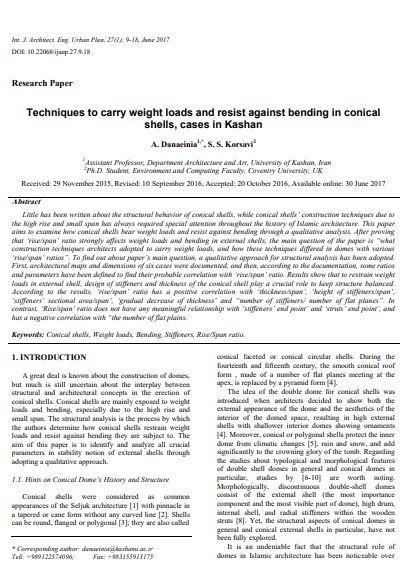
The Shaykh Lutfallah Mosque more closely resembles a mausoleum in its architectural typology than a traditional four-iwan mosque. Architectural historians attribute this to its use either as a private prayer space for the Shah’s family or as a sanctuary designated for women.
The mosque’s portal iwan does not align directly with the elevation of the maydan. Instead, it is fronted by a small recessed courtyard that extends from the maydan and connects to the continuous corridor running along the northern and southern edges of the maydan’s commercial structures. The mosque’s main entrance is located on the east side of this courtyard. Rather than being perpendicular to the maydan’s eastern wall, the mosque is positioned at an angle—approximately 45 degrees—creating a striking asymmetry. From the maydan, the dome appears slightly offset, about 6.5 meters to the right of the main portal iwan. This misalignment, unique among mosques, results from the effort to orient the prayer niche (mihrab) correctly toward Mecca (southwest) and contributes to the building’s visual complexity.
In contrast to the maydan’s sand-colored brick façade, the mosque’s portal iwan is richly adorned with colorful mosaic decoration. Set into the eastern wall of the courtyard, the iwan rises on a platform accessed by four steps. A band of white inscription on a dark blue background frames the three sides of the portal niche, above which begins the iwan’s vault. This vault is composed of four tiers of small, glazed-tile muqarnas that rise to form a concentric floral medallion. Beneath the inscription band, a pointed-arch doorway is flanked by mosaic panels of floral arabesques in yellow, white, and blue on a dark blue ground. These panels rest above a continuous marble dado.
Because of the mosque’s angular orientation, visitors cannot access the prayer chamber directly from the maydan through the main portal iwan. Entering the mosque involves a progression through two angled corridors—aligned northeast and southeast—along the northwest and northeast walls of the prayer hall. Upon turning southwest, visitors arrive at the domed sanctuary and face the mihrab on the qibla wall. This carefully choreographed movement—transitioning from light into shadow and back into a luminous chamber—offers one of the building’s most compelling experiential qualities, as the interior comes alive with reflected light from its glazed surfaces.
Compared to the expansive maydan, the Shaykh Lutfallah Mosque is intimate in scale. It comprises a single domed chamber measuring 19 meters per side, surrounded by smaller rooms likely used for service functions. The portal iwan overlooks the maydan, and the sanctuary is encircled by a corridor. Two service rooms measuring 6 by 9 meters are accessible from this corridor: one on the western side, the other at the far end of the eastern wall. An additional 8 by 16 meter room is located outside the southern wall and is accessed via the corridor along the maydan wall, turning right past the vestibule. Although the mosque is not a simple rectangular structure, its total mass fits within a footprint of approximately 44 by 30 meters, with an additional 152-square-meter service area.
The dome itself is one of the few single-shell domes in Safavid architecture, composed of three structural levels. Four pointed-arched squinches, framed with inscription bands in white and blue bordered by light blue cable moldings, rise from the floor to support sixteen kite-shaped panels. These panels uphold the drum, which is articulated with sixteen arched niches featuring alternating double-grille windows in arabesque patterns. Inside, the dome is decorated with a radiant sunburst at its center, from which concentric medallions of floral motifs descend and grow in scale. Externally, the dome is adorned with intricate arabesques in white, blue, and black set against a yellow background.
Celebrated by historians and visitors alike, the Shaykh Lutfallah Mosque is considered one of the most significant architectural achievements on Isfahan’s maydan—distinguished by its unique placement, scale, refined design, and intricate ornamentation.
Disclaimer : Mopsqpedia is a non-profit database. All images featured in the database are sourced from various references, publications, and websites related to mosque architecture. Mosqpedia does not claim ownership of any images unless explicitly stated. Images are provided solely for educational and bibliographic purposes. Mosqpedia disclaims any responsibility for copyright infringements related to the images displayed. Users are responsible for verifying copyright status and obtaining permission from original sources if they intend to reproduce, distribute, or use any image beyond fair use.
I agree to the terms outlined below:
You agree to upload and assign Mosqpedia Database the rights to use the content worldwide and in perpetuity across all current and future media platforms. Mosqpedia Database may edit, copy, adapt and translate your contribution.
The content will be distributed under the Creative Commons Attribution-Deed – Attribution-NonCommercial-NoDerivatives 4.0 International – Creative Commons
All data will be stored in line with data protection regulations.
I agree to the terms outlined below:
You agree to upload and assign Mosqpedia Database the rights to use the content worldwide and in perpetuity across all current and future media platforms. Mosqpedia Database may edit, copy, adapt and translate your contribution.
The content will be distributed under the Creative Commons Attribution-Deed – Attribution-NonCommercial-NoDerivatives 4.0 International – Creative Commons
All data will be stored in line with data protection regulations.